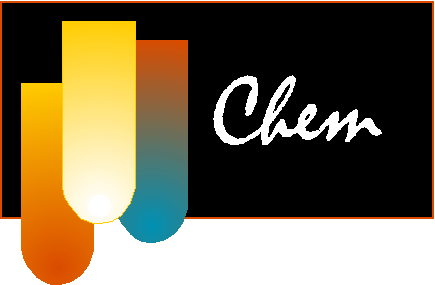 | Sample Lab Questions Investigation #7:
"The Science of Soap"
|
These questions have been taken from lab quizzes given in previous years.
Some of the answers are listed at the end.
Note: The subscripts and superscripts may not appear as such. It depends upon your web browser.
- 1.
- (2pts) Describe the procedure for vacuum filtration.
- 2.
- (2pts) Briefly explain how soap works when used to clean oily dirt from an object (or your body). (You may include a picture.)
- 3.
- a. (1 pt) Define hard water.
- b. (2 pts) Define hydrophobic and lipophilic. Then give a formula for soap and label the hydrophobic and lipophilic portions of the molecule.
- 4.
- (2pts) A student made soap by the following reaction:
C51H98O6 + 3NaOH  3NaC16H31O2 + C3H8O3
If the student reacted 30.6 g of oil with excess NaOH, calculate his theoretical yield of soap.
3NaC16H31O2 + C3H8O3
If the student reacted 30.6 g of oil with excess NaOH, calculate his theoretical yield of soap.
- 5.
- (5pts) A person takes a bath every day for a week (7 days) in a bathtub containing 110 liters of water that contains 152 mg of calcium hydrogen carbonate [Ca(HCO3)2] per liter of water. How many grams of soap will be used during this week to remove all of the calcium ions as calcium stearate from the bath water? (Assume the soap is pure sodium stearate and that calcium stearate is completely insoluble in the bath water. The formula of calcium stearate is [CH3(CH2)16CO2]2Ca.)
Answers
4. 31.7 g soap
5. 443 g soap

 To report any corrections, please e-mail Dr. Wendy Keeney-Kennicutt.
To report any corrections, please e-mail Dr. Wendy Keeney-Kennicutt.


 3NaC16H31O2 + C3H8O3
3NaC16H31O2 + C3H8O3
 To report any corrections, please e-mail Dr. Wendy Keeney-Kennicutt.
To report any corrections, please e-mail Dr. Wendy Keeney-Kennicutt.